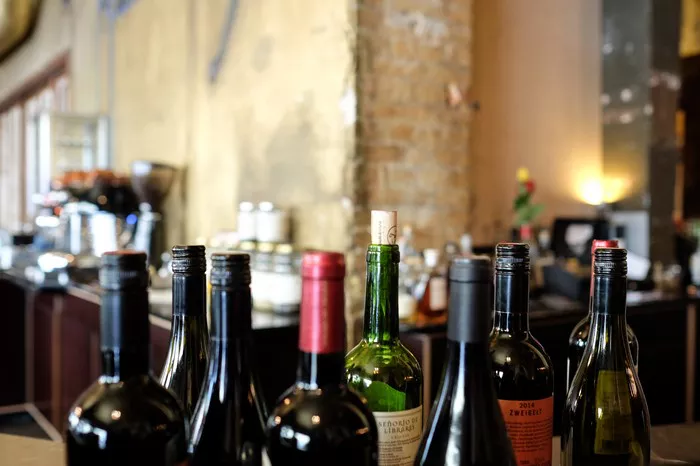Chardonnay, with its wide range of flavors and styles, is one of the most beloved and versatile white wines in the world. However, the question of whether to chill Chardonnay often arises, sparking debates among wine enthusiasts. In this article, we will delve into the factors that influence whether you should chill Chardonnay, exploring its taste profile, serving temperature considerations, and the impact of chilling on your overall enjoyment.
See Also: red wine with oysters
Understanding Chardonnay: A Versatile White Wine
Chardonnay grapes are grown in various wine regions across the globe, leading to a diverse array of styles and flavor profiles. From the crisp and unoaked expressions to the rich and buttery variations, Chardonnay offers something for every palate. However, the decision of whether to chill Chardonnay depends largely on its style and intended consumption experience.
The Influence of Temperature on Chardonnay’s Flavor
Temperature plays a crucial role in shaping the flavor profile of Chardonnay. When served too cold, the wine’s aromas and flavors may become muted, diminishing its complexity and nuances. Conversely, serving Chardonnay too warm can accentuate its alcohol content, making it feel heavy on the palate and overpowering its delicate characteristics.
Exploring the Optimal Serving Temperature
To fully appreciate the flavors and aromas of Chardonnay, it is essential to serve it at the appropriate temperature. Generally, Chardonnay is best enjoyed when chilled, but not overly cold. The ideal serving temperature for most Chardonnay wines falls between 45°F and 55°F (7°C to 13°C). This temperature range allows the wine to showcase its fruit flavors, floral notes, and subtle oak nuances without being overwhelmed by chill.
Factors to Consider When Chilling Chardonnay
Several factors influence the decision of whether to chill Chardonnay, including the wine’s style, age, and personal preference. Crisp, unoaked Chardonnays, such as those from cool-climate regions like Chablis or the Finger Lakes, often benefit from being served slightly colder to highlight their refreshing acidity and vibrant fruit flavors. On the other hand, full-bodied, oak-aged Chardonnays, such as those from California or Burgundy, may be served a few degrees warmer to enhance their creamy texture and complex aromatics.
Chilling Chardonnay for Different Occasions
The decision to chill Chardonnay also depends on the occasion and context of consumption. For casual gatherings or outdoor events on warm summer days, chilling Chardonnay can provide a refreshing and thirst-quenching experience. In contrast, for more formal occasions or intimate dinners, allowing Chardonnay to warm up slightly before serving can enhance its elegance and sophistication, allowing for a more nuanced tasting experience.
Experimenting with Chardonnay Temperature
While there are recommended serving temperatures for Chardonnay, personal preference ultimately reigns supreme. Experimenting with different serving temperatures can be a fun and educational experience, allowing you to discover how temperature impacts the wine’s flavor profile and overall enjoyment. Consider conducting a tasting experiment with friends or family, serving the same Chardonnay at various temperatures to observe how it evolves in the glass.
The Importance of Proper Storage
Regardless of whether you choose to chill Chardonnay or serve it at room temperature, proper storage is essential for preserving its quality and integrity. Store Chardonnay bottles horizontally in a cool, dark place away from direct sunlight and temperature fluctuations. Avoid storing Chardonnay in the refrigerator for extended periods, as the vibration and low humidity can adversely affect the wine’s aging process.
Decanting Chilled Chardonnay
If you opt to chill Chardonnay before serving, consider allowing the wine to warm up slightly in the glass or decanter. Decanting chilled Chardonnay can help release its aromas and flavors, allowing them to fully express themselves as the wine reaches its optimal serving temperature. Pouring Chardonnay into a decanter and letting it sit for 10 to 15 minutes before serving can make a noticeable difference in its taste and texture.
The Role of Food Pairing
When deciding whether to chill Chardonnay, it’s essential to consider the food pairings. Chilled Chardonnay pairs exceptionally well with a variety of dishes, including seafood, poultry, salads, and creamy pasta sauces. The wine’s crisp acidity and refreshing qualities complement lighter fare, while its fuller-bodied expressions can stand up to richer, more flavorful dishes. Experiment with different food pairings to find the perfect match for your chilled Chardonnay.
Conclusion
In conclusion, the question of whether to chill Chardonnay depends on a variety of factors, including the wine’s style, serving temperature recommendations, and personal preferences. While Chardonnay is generally best enjoyed when chilled, it’s essential to consider the occasion, food pairings, and desired tasting experience when making the decision. By understanding how temperature influences Chardonnay’s flavor profile and experimenting with different serving temperatures, you can enhance your enjoyment of this versatile and beloved white wine. So, should you chill Chardonnay? The answer lies in finding the temperature that best suits your palate and the context of your wine-drinking experience.


